Leo’s Company Accounting 11th edition (PDF) has been updated to reflect the ongoing and various reforms as a result of Australia’s adoption of the International Financial Reporting Standards (IFRS). This Eleventh Edition provides a reliable and authoritative overview of the various changes required within the framework and a selection of key accounting standards governing corporate entities.
The textbook provides university students with a comprehensive overview of the principles and practice of company accounting and helps them develop practical grounding to reinforce their understanding. The new 11th edition presents essential ‘must know’ information on accounting for a corporate entity and the requirements for externally disclosing the financial position of the entity.
Additional ISBNs: 978-0730344773, 9780730344773, 0730344770, 978-07303435471, 978-0730364580
Table Of Contents
- Cover
- Title page
- Copyright
- Chapter 1 Nature and regulation of companies
- Introduction
- 1.1 The nature of a company
- 1.2 Different types of companies
- 1.2.1 Proprietary companies
- 1.2.2 Public companies
- 1.2.3 Other titles for companies
- 1.3 Forming a company
- 1.3.1 Application forms
- 1.3.2 The certificate of registration
- 1.3.3 Replaceable rules and a constitution
- 1.4 Administering a company
- 1.5 Funding a company
- 1.5.1 Shares
- 1.5.2 Debentures
- 1.5.3 Options and interests in managed investment schemes
- 1.5.4 Disclosure documents
- 1.6 Background to the Corporations Act 2001
- 1.7 Accounting regulation of companies
- 1.7.1 Brief history of accounting regulation in Australia
- 1.7.2 The Financial Reporting Council (FRC)
- 1.7.3 The Australian Accounting Standards Board (AASB)
- 1.7.4 Current standard-setting arrangements
- 1.7.5 The International Accounting Standards Board (IASB)
- 1.7.6 The Financial Accounting Standards Board (FASB)
- 1.7.7 The IFRS Interpretations Committee
- 1.7.8 The Asian–Oceanian Standard-Setters Group (AOSSG)
- 1.7.9 The European Financial Reporting Advisory Group (EFRAG)
- 1.8 Other important regulatory organisations
- 1.8.1 The Australian Securities and Investments Commission (ASIC)
- 1.8.2 The Australian Securities Exchange (ASX)
- 1.9 General purpose financial reports and the reporting entity concept
- 1.9.1 Introduction
- 1.9.2 General purpose financial reports
- 1.9.3 The reporting entity concept and users of financial reports
- 1.10 Differential reporting
- Chapter 1 practice quiz
- Summary
- Key terms
- Review questions
- Case studies
- Websites
- References
- Acknowledgements
- Chapter 2 Financing company operations
- Introduction
- 2.1 Accounting for share issues
- 2.1.1 Share capital
- 2.1.2 Accounts used in equity share issues to the public
- 2.2 Undersubscription and oversubscription
- 2.2.1 Undersubscription
- 2.2.2 Oversubscription
- 2.3 Forfeiture and reissue of shares
- 2.3.1 Forfeiture
- 2.3.2 Reissue
- 2.4 Share issue costs and formation costs
- 2.4.1 Share issue costs, including underwriting fees
- 2.4.2 Formation costs
- 2.5 Subsequent issues of equity shares
- 2.5.1 Rights issues
- 2.5.2 Private placements
- 2.5.3 Bonus issues
- 2.6 Share options
- 2.7 Redeemable preference shares
- 2.7.1 Classified as equity
- 2.7.2 Classified as a liability
- 2.8 Conversion of shares
- 2.8.1 Share consolidations
- 2.8.2 Share splits
- 2.8.3 Share conversions
- 2.9 Share buy-backs
- 2.9.1 Legal requirements
- 2.9.2 Accounting aspects
- 2.10 Debentures
- 2.10.1 Nature of debentures
- 2.10.2 Issue
- 2.10.3 Redemption
- 2.10.4 Convertible notes
- 2.11 Dividends
- 2.11.1 Introduction to dividends
- 2.11.2 Interim and final dividends — accounting entries
- 2.11.3 Preference dividends
- 2.11.4 Bonus share issues
- 2.12 Reserves and retained earnings
- 2.12.1 Nature of reserves
- 2.12.2 Reserves established by accounting standards
- 2.12.3 Reserves established by accepted practice
- 2.12.4 Retained earnings
- Chapter 2 practice quiz
- Summary
- Key terms
- Demonstration problems
- Review questions
- Case studies
- Practice questions
- References
- Acknowledgements
- Chapter 3 Business combinations
- Introduction
- 3.1 The nature of a business combination
- 3.2 Accounting for a business combination — basic principles
- 3.2.1 Identifying the acquirer [step 1]
- 3.2.2 Determining the acquisition date [step 2]
- 3.3 Accounting in the records of the acquirer
- 3.4 Recognising and measuring assets and liabilities
- 3.4.1 Recognition and measurement of assets acquired and liabilities assumed [step 3]
- 3.5 Accounting in the records of the acquirer
- 3.5.1 Goodwill and gain on bargain purchase [step 4]
- 3.5.2 Consideration transferred
- 3.5.3 Acquisition-related costs
- 3.5.4 Goodwill
- 3.5.5 Accounting for a gain on bargain purchase
- 3.6 Accounting by the acquirer: shares acquired in an acquiree
- 3.6.1 Existence of a previously held equity interest
- 3.7 Accounting in the records of the acquiree
- 3.7.1 Acquiree does not liquidate
- 3.7.2 Acquiree liquidates
- 3.7.3 Acquirer buys only shares in the acquiree
- 3.8 Subsequent adjustments to the initial accounting for a business combination
- 3.8.1 Goodwill
- 3.8.2 Contingent liabilities
- 3.8.3 Contingent consideration
- 3.9 Disclosure — business combinations
- Chapter 3 practice quiz
- Summary
- Key terms
- Demonstration problem 1
- Demonstration problem 2
- Review questions
- Case studies
- Practice questions
- References
- Acknowledgements
- Chapter 4 Disclosure: legal requirements and accounting policies
- Introduction
- 4.1 General purpose financial statements
- 4.1.1 Objectives of general purpose financial statements
- 4.2 Annual reporting requirements
- 4.2.1 Legislative requirements for preparing annual financial reports
- 4.2.2 Annual financial report
- 4.2.3 Annual directors’ report
- 4.2.4 Annual auditor’s report
- 4.2.5 Concise reporting to members
- 4.3 Half-year financial report
- 4.4 Accounting policies
- 4.4.1 Disclosure of accounting policies
- 4.4.2 Disclosure of changes in accounting policies
- 4.5 Changes in accounting estimates
- 4.6 Errors
- 4.7 Impracticability in respect of retrospective adjustments for accounting policy changes or correction of errors
- 4.8 Materiality
- 4.9 Events occurring after the end of the reporting period
- Chapter 4 practice quiz
- Summary
- Key terms
- Demonstration problem 1
- Demonstration problem 2
- Review questions
- Case studies
- Practice questions
- References
- Acknowledgements
- Chapter 5 Disclosure: presentation of financial statements
- Introduction
- 5.1 A complete set of financial statements
- 5.2 General features of a complete set of financial statements
- 5.2.1 Fair presentation and compliance with standards
- 5.2.2 Going concern
- 5.2.3 Accrual basis of accounting
- 5.2.4 Materiality and aggregation
- 5.2.5 Offsetting
- 5.2.6 Frequency of reporting
- 5.2.7 Comparative information
- 5.2.8 Consistency of presentation
- 5.2.9 Identification of the financial statements
- 5.3 Statement of financial position
- 5.3.1 Information to be presented in the statement of financial position
- 5.3.2 Current/non-current distinction
- 5.3.3 Illustrative statement of financial position
- 5.3.4 Information to be presented either in the statement of financial position or in the notes.
- 5.4 Statement of profit or loss and other comprehensive income
- 5.4.1 Profit or loss
- 5.4.2 Other comprehensive income
- 5.4.3 Total comprehensive income
- 5.4.4 Information to be presented in the statement of profit or loss and other comprehensive income
- 5.4.5 Information to be presented either in the statement of profit or loss and other comprehensive income or in the notes
- 5.4.6 Illustrative statement of profit or loss and other comprehensive income
- 5.5 Statement of changes in equity
- 5.5.1 Illustrative statement of changes in equity
- 5.6 Notes
- 5.6.1 Disclosure of accounting policies
- 5.6.2 Sources of estimation uncertainty
- 5.6.3 Capital
- 5.6.4 Other disclosures
|
- 5.7 Future developments
- 5.7.1 Extensible business reporting language (XBRL)
- 5.7.2 Corporate social responsibility
- Chapter 5 practice quiz
- Summary
- Key terms
- Demonstration problem 1
- Demonstration problem 2
- Review questions
- Case studies
- Practice questions
- Websites
- References
- Acknowledgements
- Chapter 6 Disclosure: statement of cash flows
- Introduction
- 6.1 Benefits of cash flow information
- 6.2 Format of the statement of cash flows
- 6.3 Cash and cash equivalents
- 6.4 Classification of cash flows
- 6.4.1 Cash flows from operating activities
- 6.4.2 Cash flows from investing activities
- 6.4.3 Cash flows from financing activities
- 6.5 Techniques for preparing the statement of cash flows
- 6.5.1 Cash book or cash records approach
- 6.6 Reconstruction of accounts approach
- 6.6.1 Accounts for operating cash flows
- 6.6.2 Accounts for investing cash flows
- 6.6.3 Accounts for financing cash flows
- 6.7 Statement of financial position approach
- 6.8 Reconciliation of profit to net cash from operating activities (indirect method of presentation)
- 6.9 Note disclosures
- 6.9.1 Composition of cash and cash equivalents
- 6.9.2 Acquisitions and disposals of businesses
- 6.9.3 Non-cash transactions
- 6.9.4 Other encouraged information
- 6.10 Additional issues
- 6.10.1 Other financial effects to consider
- 6.10.2 Goods and services tax (GST) and cash flows
- 6.10.3 Exceptions to gross cash flows
- 6.11 Limitations of the statement of cash flows
- 6.11.1 Earnings versus net cash from operating activities
- 6.11.2 Past cash flows reported
- 6.11.3 Non-cash transactions and events
- 6.11.4 Liquidity/solvency
- 6.11.5 Management manipulation
- 6.11.6 Differences across companies
- 6.11.7 Costs
- 6.11.8 Disclosure in the notes to the statement
- Chapter 6 practice quiz
- Summary
- Key terms
- Demonstration problem 1
- Review questions
- Case study 1
- Case study 2
- Case study 3
- Case study 4
- Case study 5
- Case study 6
- Case study 7
- Practice questions
- References
- Acknowledgements
- Chapter 7 Foreign currency transactions and forward exchange contracts
- Introduction
- 7.1 The need for translation of foreign currency amounts
- 7.1.1 Functional currency
- 7.1.2 Types of foreign currency transactions
- 7.1.3 Monetary items
- 7.2 The means of translation: exchange rates
- 7.3 Foreign exchange differences
- 7.3.1 Realised and unrealised gains or losses from exchange differences
- 7.3.2 The relationship between exchange rates and exchange differences
- 7.4 Accounting for foreign currency monetary items
- 7.4.1 The transaction date
- 7.4.2 Recording the transaction at the transaction date
- 7.4.3 Subsequent measurement of monetary item at the end of the reporting period
- 7.4.4 Subsequent measurement of foreign currency monetary items at settlement date
- 7.4.5 Illustrative examples
- 7.5 Exchange differences for non-monetary items
- 7.5.1 Qualifying assets
- 7.5.2 Revalued assets
- 7.5.3 Inventories write-downs and impairment
- 7.6 Foreign exchange risk
- 7.7 Forward exchange contracts without hedging
- 7.7.1 The nature of a forward contract
- 7.7.2 The fair value of a forward contract
- 7.7.3 Accounting where there is no hedging relationship
- 7.8 Forward exchange contracts with hedging
- 7.8.1 Hedging relationships that qualify for hedge accounting
- 7.8.2 Accounting for hedging relationships
- 7.9 Disclosures
- Chapter 7 practice quiz
- Summary
- Key terms
- Demonstration problem 1
- Demonstration problem 2
- Review questions
- Practice questions
- References
- Acknowledgments
- Chapter 8 Translation of financial statements into a presentation currency
- Introduction
- 8.1 AASB 121/IAS 21
- 8.2 Functional and presentation currencies
- 8.2.1 Functional currency
- 8.2.2 Identifying the functional currency
- 8.3 The translation process
- 8.4 Translation into the functional currency — the temporal method
- 8.5 Translation from the functional currency into the presentation currency — the current rate method
- 8.5.1 Choice of a presentation currency
- 8.6 Disclosure
- Chapter 8 practice quiz
- Summary
- Key terms
- Demonstration problem 1
- Review questions
- Case study 1
- Case study 2
- Case study 3
- Case study 4
- Case study 5
- Case study 6
- Case study 7
- Practice questions
- References
- Acknowledgements
- Chapter 9 Consolidation: controlled entities
- Introduction
- 9.1 Consolidated financial statements
- 9.1.1 Reasons for consolidation
- 9.2 Control as the criterion for consolidation
- 9.2.1 Power
- 9.2.2 Exposure or rights to variable returns
- 9.2.3 Ability to use power to affect returns
- 9.2.4 Agents
- 9.3 Preparation of consolidated financial statements
- 9.4 Investment entities
- 9.5 Business combinations and consolidation
- 9.5.1 Formation of a new entity
- 9.5.2 Reverse acquisitions
- 9.6 Disclosure
- 9.6.1 Disclosures required by AASB 12/IFRS 12
- 9.6.2 Disclosures required by AASB 127/IAS 27
- Chapter 9 practice quiz
- Summary
- Key terms
- Review questions
- Case study 1
- Case study 2
- Case study 3
- Case study 4
- Case study 5
- Case study 6
- Case study 7
- Case study 8
- Case study 9
- Case study 10
- Case study 11
- Case study 12
- Case study 13
- Case study 14
- Case study 15
- Case study 16
- Acknowledgements
- Chapter 10 Consolidation: wholly owned subsidiaries
- Introduction
- 10.1 The consolidation process
- 10.2 Consolidation worksheets
- 10.3 The acquisition analysis
- 10.3.1 Parent has no previously held equity interest in the subsidiary
- 10.3.2 Parent has previously held equity interest in the subsidiary
- 10.4 Worksheet entries at the acquisition date
- 10.4.1 Business combination valuation entries
- 10.4.2 Pre-acquisition entries
- 10.4.3 Consolidation worksheet
- 10.4.4 Subsidiary has recorded goodwill at acquisition date
- 10.4.5 Subsidiary has recorded dividends at acquisition date
- 10.4.6 Gain on bargain purchase
- 10.5 Worksheet entries subsequent to the acquisition date
- 10.5.1 Business combination valuation entries
- 10.5.2 Pre-acquisition entries
- 10.5.3 Dividends paid/payable from subsidiary equity
- 10.5.4 Pre-acquisition reserve transfers
- 10.6 Revaluations in the records of the subsidiary at acquisition date
- 10.7 Disclosure
- 10.8 Reverse acquisitions
- Chapter 10 practice quiz
- Summary
- Key terms
- Demonstration problem 1
- Demonstration problem 2
- Review questions
|
- Case study 1
- Case study 2
- Case study 3
- Case study 4
- Case study 5
- Practice questions
- Acknowledgements
- Chapter 11 Consolidation: intragroup transactions
- Introduction
- 11.1 Rationale for adjusting for intragroup transactions
- 11.2 Transfers of inventories
- 11.2.1 Sales of inventories
- 11.2.2 Realisation of intragroup profits or losses
- 11.2.3 Profits in ending inventories
- 11.2.4 Profits in opening inventories
- 11.3 Transfers of property, plant and equipment
- 11.3.1 Sales of property, plant and equipment
- 11.3.2 Depreciation and realisation of profits or losses
- 11.4 Transfers between inventories and non-current assets
- 11.4.1 Transfers from inventories to property, plant and equipment
- 11.4.2 Transfers from property, plant and equipment to inventories
- 11.5 Intragroup services
- 11.5.1 Realisation of profits or losses
- 11.6 Intragroup dividends
- 11.6.1 Dividends declared in the current period but not paid
- 11.6.2 Dividends declared and paid in the current period
- 11.6.3 Bonus share dividends
- 11.7 Intragroup borrowings
- Chapter 11 practice quiz
- Summary
- Key terms
- Demonstration problem 1
- Demonstration problem 2
- Review questions
- Case study 1
- Case study 2
- Case study 3
- Case study 4
- Practice questions
- Acknowledgements
- Chapter 12 Consolidation: non-controlling interest
- Introduction
- 12.1 Nature of the non-controlling interest (NCI)
- 12.1.1 Calculation of the NCI share of equity
- 12.1.2 Disclosure of the NCI
- 12.2 Effects of an NCI on the consolidation process
- 12.2.1 Full goodwill method
- 12.2.2 Partial goodwill method
- 12.2.3 Reasons for, and choosing between, the options
- 12.2.4 Intragroup transactions
- 12.2.5 Consolidation worksheet
- 12.3 Calculating the NCI share of equity
- 12.3.1 NCI share of recorded equity of the subsidiary
- 12.3.2 Accounting at acquisition date
- 12.3.3 Accounting subsequent to acquisition date
- 12.4 Adjusting for the effects of intragroup transactions
- 12.4.1 The concept of ‘realisation’ of profits or losses
- 12.5 Gain on bargain purchase
- Chapter 12 practice quiz
- Summary
- Key terms
- Demonstration problem 1
- Review questions
- Case study 1
- Case study 2
- Case study 3
- Case study 4
- Practice questions
- Acknowledgements
- Chapter 13 Consolidation: other issues
- Introduction
- 13.1 Direct and indirect non-controlling interest
- 13.2 Sequential acquisitions
- 13.2.1 Calculation of the NCI share of equity
- 13.2.2 The effects of intragroup transactions on the calculation of the NCI
- 13.2.3 Dividends
- 13.3 Non-sequential acquisitions
- 13.4 Reciprocal ownership
- 13.4.1 Pre-acquisition and valuation entries
- 13.4.2 Non-controlling interest
- 13.5 Changes in ownership interests
- 13.5.1 Changes in ownership interests without loss of control
- 13.5.2 Acquisition of additional shares by the parent subsequent to date of acquisition
- 13.5.3 Sale of shares by parent with retention of control
- 13.5.4 Changes in ownership interests with loss of control
- 13.5.5 Disclosures relating to changes in ownership interests
- Chapter 13 practice quiz
- Summary
- Key terms
- Demonstration problem 1
- Demonstration problem 2
- Demonstration problem 3
- Review questions
- Case study 1
- Case study 2
- Practice questions
- Acknowledgments
- Chapter 14 Associates and joint ventures
- Introduction
- 14.1 Identifying associates and joint ventures
- 14.1.1 Associates
- 14.1.2 Joint ventures
- 14.2 The equity method of accounting: rationale and application
- 14.2.1 Rationale for the method
- 14.2.2 Application of the equity method — consolidated financial statements or separate financial statements
- 14.3 Applying the equity method: basic principles
- 14.4 Applying the equity method: goodwill and fair value adjustments
- 14.4.1 Applying the equity method in the first year
- 14.4.2 Applying the equity method across multiple years
- 14.5 Applying the equity method: other issues
- 14.5.1 Dividends, reserves, dissimilar accounting policies and different ends of reporting periods
- 14.5.2 Investing in an associate in stages
- 14.5.3 Becoming an associate after acquiring an ownership interest
- 14.6 Applying the equity method: inter-entity transactions
- 14.6.1 Transactions between investor and associate
- 14.6.2 Transactions between associates
- 14.7 Share of losses of the associate
- 14.8 Disclosure
- Chapter 14 practice quiz
- Summary
- Key terms
- Demonstration problem 1
- Review questions
- Case study 1
- Case study 2
- Practice questions
- References
- Acknowledgements
- Chapter 15 Joint arrangements
- Introduction
- 15.1 Joint arrangements: characteristics and classification
- 15.1.1 The characteristics of a joint arrangement
- 15.1.2 The classification of a joint arrangement
- 15.2 Accounting for joint arrangement
- 15.2.1 Accounting by the joint operation itself
- 15.3 Accounting by a joint operator
- 15.3.1 Contributions of assets to a joint operation
- 15.3.2 Management fees paid to a joint operator
- 15.4 Disclosure
- Chapter 15 practice quiz
- Summary
- Key terms
- Demonstration problem 1
- Review questions
- Case study 1
- Case study 2
- Case study 3
- Case study 4
- Case study 5
- Case study 6
- Case study 7
- Practice questions
- References
- Acknowledgements
- Chapter 16 Insolvency and liquidation
- Introduction
- 16.1 Insolvency and administration
- 16.1.1 Role and powers of the administrator
- 16.1.2 The administrator’s accounts
- 16.2 Winding up in insolvency and by the court
- 16.3 Voluntary winding up
- 16.4 Powers of the liquidator
- 16.5 The liquidator’s accounts
- 16.6 Proof of debts
- 16.7 Priority of payment of debts
- 16.7.1 Secured creditors
- 16.7.2 Preferential unsecured creditors
- 16.7.3 Ordinary unsecured creditors
- 16.7.4 Deferred creditors
- 16.7.5 Summary of priority of payment of creditors (assuming insolvency)
- 16.8 Rights of contributories
- 16.8.1 Insufficient funds for creditors
- 16.8.2 Sufficient funds to pay creditors, but not to repay share capital
- 16.8.3 A surplus of funds
- 16.8.4 Calls in advance and arrears of dividends
- 16.9 Accounting for liquidation
- 16.9.1 Reports prepared by the company for the liquidator
- 16.9.2 Realisation of the assets
- 16.9.3 Possession of assets by secured creditors
- 16.9.4 Payment to other creditors in order of priority
- 16.9.5 Return of capital to contributories
- 16.10 Receivership
- Chapter 16 practice quiz
- Summary
- Key terms
- Demonstration problem 1
- Demonstration problem 2
- Demonstration problem 3
- Review questions
- Case study 1
- Case study 2
- Practice questions
- Acknowledgements
|
P.S All prices on our site are in US$
NOTE: This sale only includes Company Accounting 11e in PDF. No online codes or access is included.

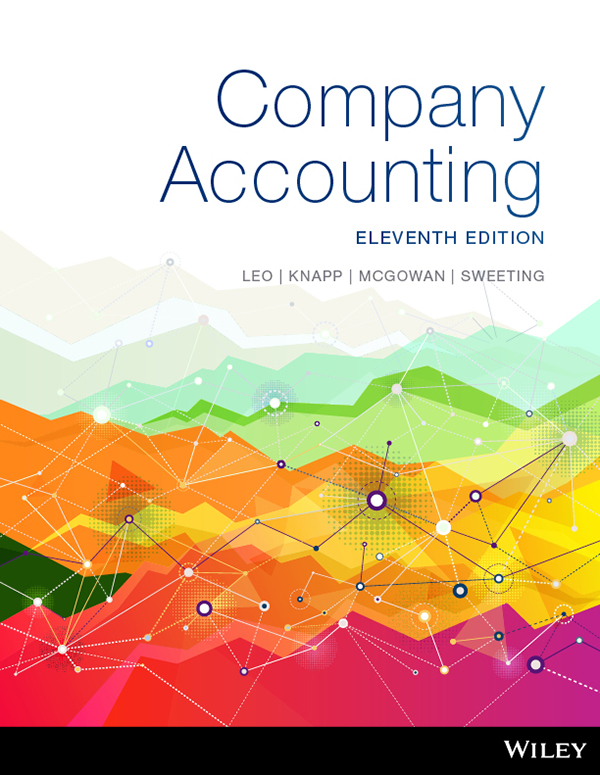
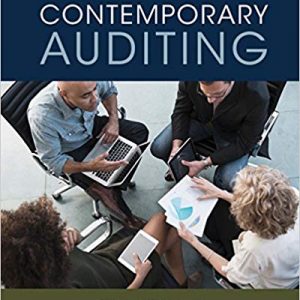
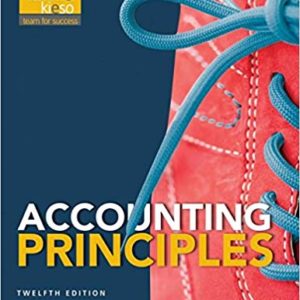
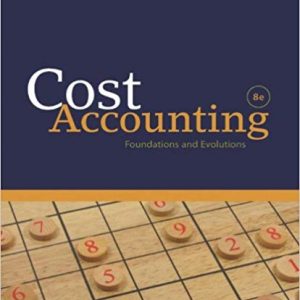
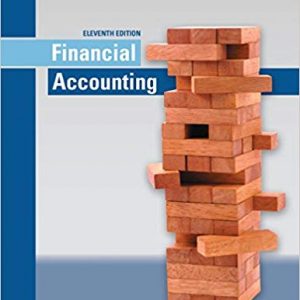
Brandon Smith –
Cheap, but missing chapters 17 & 18, which were incidentally the chapters I needed the most so I had to buy the book elsewhere. Waste of money
collegestudent –
We are very sorry for the trouble, but we double-checked from the Publishers and this version only has 16 chapters (also the index only has 16 chapters). If possible, can you send us an image of the 18th chapter one? Or a link/website, so we can talk to the publishers again?
Amos K –
Thank you, save me a lot of trouble and money!